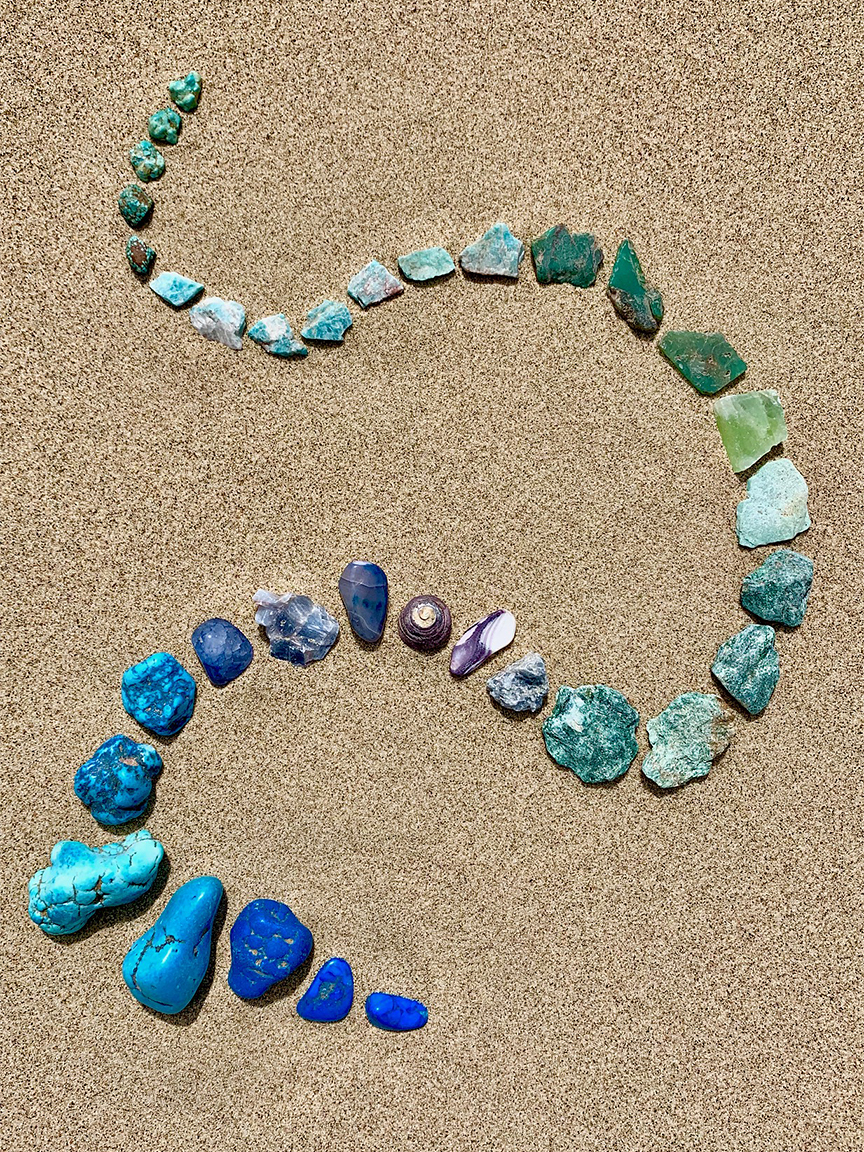We may earn revenue from the products available on this page and participate in affiliate programs.
It’s difficult to have a creative outlet when you move frequently. There’s hardly time to set up that sewing space, and forget about unboxing and repackaging all your paints. That’s the conundrum jewelry designer Jessica Barensfeld has faced the past five years, since the birth of her son. Not only has her family moved at least once a year, they’ve traveled around the world, most recently embarking on a cross-country van trip last summer. All the while, she wanted to create art. So she looked at her surroundings.
“When we moved to Long Island, I really started to get in touch with the seasons and the transitions that happen. Different things wash ashore at different times of the year—there would be one week where the beach was covered in crab legs, and another in scallop shells,” she says. “I became fascinated by patterns and cycles.” Inspired, she created patterns of her own, arranging leaves, shells, twigs, petals, rocks, and other natural objects into what she refers to as organic compositions or mandalas; photographing them; and then carefully returning them to nature. At one point, she realized that her son had started collecting items along with her and making his own designs.
Barensfeld’s designs are admittedly advanced—the work of the trained eye—but collecting and arranging is a task suitable for creatives of any age. In fact, she encourages trying it with little ones to help them better appreciate nature and enjoy a sense of artistic fulfillment. “It can turn what might seem like a mundane walk into something super-exciting for them,” she says. Here, she shares three tips to get started.
Find Your Objects

All of Barensfeld’s organic compositions make the most of a theme—the more specific, the better. “I’ll be walking down the beach and decide, you know what, I want to do a composition of all triangle-shaped rocks,” she says. “Then it becomes really fun because it’s a game of finding triangle shapes.” Before she makes any kind of arrangement, she gathers all the materials she wants to work with—which can admittedly take days or even weeks.
Pick a Shape

Finished collecting and have no idea what to do next? Just ask your children their favorite shape. “My son loves ovals, so we constantly make them,” says Barensfeld. Lay out the parameters for the arrangement to help guide them as they fill it in.
Play With Pattern

You also want to consider size and color when making your arrangement—whether you want to create a rainbow composition, try an ombré layout, or go abstract. There are no rules, but it can be helpful to observe how colors change on a leaf or how different-size petals appear on a flower. “It helps to study the beauty of the objects,” explains Barensfeld. “Nature really does it best.”
It’s hammer time: Follow @reno_notebook for easy rental updates, clever DIYs, and tips to nail your next project.
